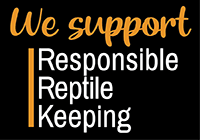Russian Tortoise Caresheet and bioactive maintenance

Russian Tortoise
Also known as Horsfield's Tortoise.
Testudo horsfieldii
Threatened Species
Life span- 40-60 years
Hatchling size- 1 inch
Adult size- 8-10 inches, with females being larger than males
Introduction
Unlike their name states, russian tortoises are native to the Middle east and parts of Asia, roaming the arid grasslands for every edible plant, leaf and vegetable they can find. They are extremely hardy, able to bury and escape from the large range of temperatures for up to 9 months of the year. This makes them an easier species because they are able to be kept comfortably outdoors year round in most areas in the southern United States that are drier.
Fun Fact, two Russian tortoises (along with other reptiles and arachnids) got to fly to the moon in 1968.
It is imperative that Russian tortoises are not mixed or co-housed with any other species as they are a largely imported species and carriers of a specific virus. While this virus is not detrimental to Russian tortoises health or us humans, It will be fatal to any other species of tortoise it comes in contact with. For more information on this virus, click here for a veterinary cited article.
Requirements- Based on a 40 gallon for a younger animal, and a custom indoor / outdoor enclosure for an adult.
- Enclosure
- Basking lamp
- Plug-in lamp dimmer
- ReptiSun 10.0 or Arcadia 12%
- Plant lights
- Zilla 24/7 Digital Timer Power Center power strip timer
- Temp gun
- Exo Terra 2qt Mister sprayer
- Bio Dude Digital Thermometer / Hygrometer
- Bio active kit
- Giant Orange or Powder Blue Isopods, Arid Springtails
- Herbivore type of plants. Spineless Opuntia Cacti, Rosemary, Mint, basil, Oregano, Aloes, Haworthias and other edibles.
- Branches
- Water bowls / food bowls
- Vitamins - Calcium Bone is highly recommended in conjunction with Calcium with NO D3 (if UVB is provided) + Multivitamin such as Herptivite.
Terrarium size- Having a deep enclosure, as well as floor space is important for this species as they dig and burrow for long periods of time. 40 gallons for younger specimens - custom space at least 3x6 feet for an adult as they require larger floor space than a 40 gallon. Tortoise tables, stock bins, custom built or bought for inside or outside work well as options. Tortoises are species that walk miles and miles a day for food, they need room to roam.
The common myth of reptiles growing to the size of their enclosure is false, resulting in severe health issues. Tortoises will get deformed from being kept in too small of a space.
Substrate- They are diggers and burrow, utilizing enclosure depth for digging space is important as it helps this species thermoregulate more easily. Using the dudes' soil mixes will help hold up the tunnels they will dig to hide in so they can continue to use that burrow- till they destroy it and dig a new one.
Decor- Just like many other tortoise species they will trample or eat anything planted inside the enclosure. Hides and Decor should be stable, short and easily climbable so they do not get injured while exploring and that the plants used are well-started and edible. Any plants inside the enclosure will need an LED light to make sure the plants are growing as healthy as possible as decor but also food. While russian tortoises are not arborel all reptiles will utilize anything inside of the enclosure to explore. Decor provides enrichment, and enrichment is necessary for reptiles to thrive. The more we design their enclosures to be close to their natural environment the better.
Heating & Lighting- Handling a large range of temperatures very well, they require a UVB bulb and will utilize a separate heating element for a basking spot. UVB is important for the tortoise's health and shell growth, while the basking lamp is for thermoregulation to digest properly.
https://www.youtube.com/watch?v=1q3P8T49NTA
UVB- As stated in the lighting section above, UVB is important for tortoise health and growth.
This light should be available on a 12 hour cycle to mimic daylight. The amount and % the bulb gives off is dependent on which type of enclosure you have. A 10- 12% may be necessary depending on the height of the indoor enclosure. Please email us at customercare@thebiodude.com so we can give the proper recommendation.
Basking lamp- wattage for this bulb or ceramic heat emitter to get the proper heating is dependent on the biome on which you live, using a thermostat and thermometer to regulate and provide the necessary heat.
- Day time basking 90 - 100 F
- Ambient 68 - 80 F
- Night time 55 - 75 F
https://www.youtube.com/watch?v=_fVtO78FPMI
Lights for plants- For the plants LED light a 16 inch glow and grow would be good however we prefer to use the 22 inch glow and grow as it gives a better light range for the plants all over the enclosure due to the size. This will also aid in the reptiles natural photoperiod, keeping the tortoise healthy.
https://www.thebiodude.com/blogs/helpful-husbandry-faqs/7-ways-to-keep-your-herp-healthy
Humidity- 30-60%, leaning more towards being dryer. Too much humidity coupled with too hot or too cold of temperatures will cause respiratory issues very quickly.
Food- Russian tortoises being Herbivorous, they will eat a variety of greens, grasses, leaves, flowers and shredded harder veggies. Feeding the greens every day to every two days, with fruit making up only 10% of their diet. (once every week or two weeks)
https://russian-tortoise.com/food-guide/
Handling- Easy to pick up because they're small, they tolerate minimal handling well. Although they would prefer to be set down on a stable surface to explore, more than being handled.
The Dude Abides
- Josh Halter










